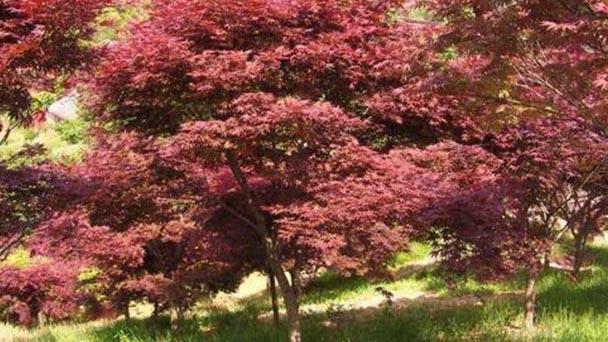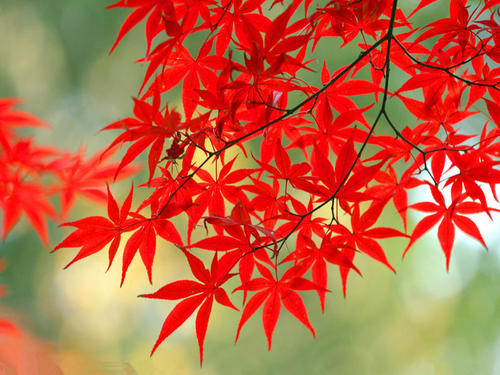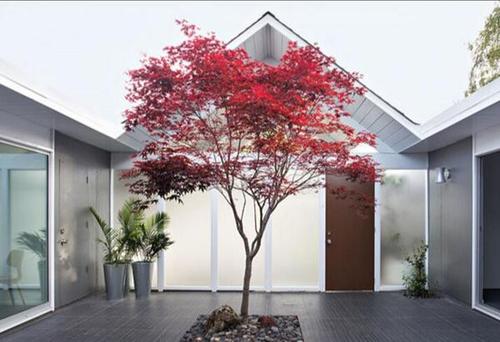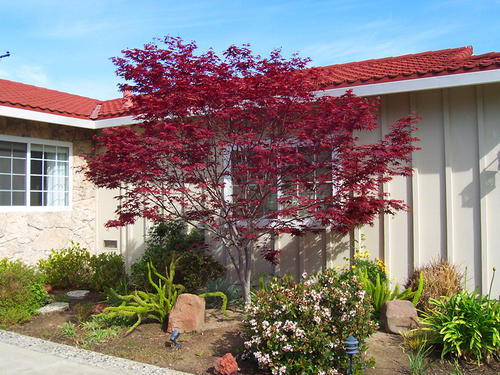How to grow and care for Japanese maple
Written by Maggie
Feb 01 2021

Japanese Maple is one of the most beautiful plants in the world, and when in full bloom, it can give people the illusion of being unreal. Because of its beauty, many people want to grow Japanese Maple at home. There is no secret to the conservation of Japanese Maple. It depends on the care of the plant itself. Let's look at growing Japanese Maple care.

1. Culture soil care for growing Japanese Maple
In the choice of soil, it is best to be able to mix their own production. On the market to buy leaf rot soil, garden soil and a small amount of river sand and then add bone powder mixed production of the foundation soil effect is very good. Japanese Maple has a relatively developed root system with strong extensibility. When we grow and care for Japanese Maple, the cultivation pot should be outside the deep bucket, and the soil should also be sufficiently permeable and permeable.
2. Moisture care for growing Japanese Maple
Japanese Maple like wet conditions, but are able to tolerate some degree of drought. When we grow and care for Japanese Maple, it is necessary to prevent water in the basin. If the water in the basin is more serious, the rhizome will rot and live insects. It is best to wait until the basin soil dry again one-time pouring permeable, not watering half stay half.
3. Temperature care for growing Japanese Maple
Japanese Maple has a strong ability to withstand cold and heat, and it can survive even at minus 20 ° C above 40 ° C. When we grow and care for Japanese Maple, as long as there is no weak plant erosion caused by diseases and pests, there is no need to worry about temperature for pot culture in the domestic temperature environment.

4. Illumination care for growing Japanese Maple
The newly planted seedlings try their best to avoid shade and sun. At this time, the young plants are relatively weak, and prolonged illumination will cause some troubles to the plants. Under normal growth, the Japanese Maple is very fond of light irradiation. So when we grow and care for Japanese Maple, it can be cultured in a sunny place in half sunshine. Try to avoid the summer sun.
5. Fertilizer care for growing Japanese Maple
Fertilizer is used to promote canopy foliage. Phosphorus and potash are very effective and reliable. When we grow and care for Japanese Maple, dilute fertilizer and water should be used as far as possible to avoid the corrosion of soil by a high concentration of fertilizer. In addition, control the amount of nitrogen fertilizer. After all, Japanese Maple leaves are red, and adding more nitrogen fertilizer will make the leaves turn green.
6. Growing Japanese Maple care for pest control
In the process of pot culture, powdery mildew, scale shell insects, aphids and other diseases and insect pests may occur. In addition to moving to the light, the temperature is the breeding area. When we grow and care for Japanese Maple, it is also necessary to prepare oxidized dimethoate, imide phosphorus sulfur emulsion and other chemical agents to kill insects and bacteria. The surface of pests and diseases must not be taken lightly.

Latest Updated
- Benefits of Bugleweed - 7 Science-backed Health Benefits
- Bugleweed Dangers & Side Effects - Is It Poisonous?
- How to Plant Evergreen Trees - What You Should Know
- When to Plant Evergreens - Grow Guide for Evergreen Trees
- 12 Wonderful Evergreen Shrubs for Your Garden
- 12 Popular Evergreen Plants with Pictures for Beginners
- When And How To Prune A Lilac Bush Like a Pro
- How to Grow & Care for Lilac Vine (Hardenbergia Violacea)
- Japanese Lilac Tree (Syringa Reticulata) Care & Propagation Guide
- Shumard Oak Pros and Cons - What to Know
Popular Articles
- Winter maintenance of Antirrhinum Majus
- How to Grow Terminalia Mantaly Tree
- How to Grow and Care for Crossostephium Chinense
- How to grow Antirrhinum Majus in spring
- Peristeria Elata (Dove Orchid) Profile: Info & Care Guide
- Underwatered Snake Plant (Sansevieria Trifasciata) - Signs And How To Fix
- How to Care for Brazilian Jasmine Plant (Mandevilla Sanderi)
- How to Grow & Care for Graptopetalum Purple Delight in Summer
- Rosa Chinensis (China Rose): Plant Growing & Care Tips
- How to Care for Baby Sun Rose (Aptenia Cordifolia)